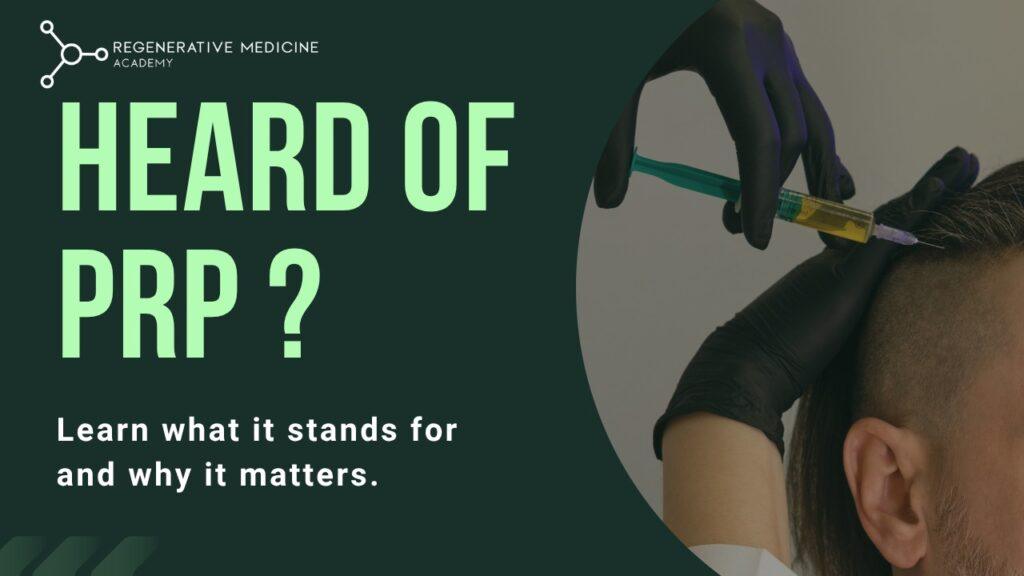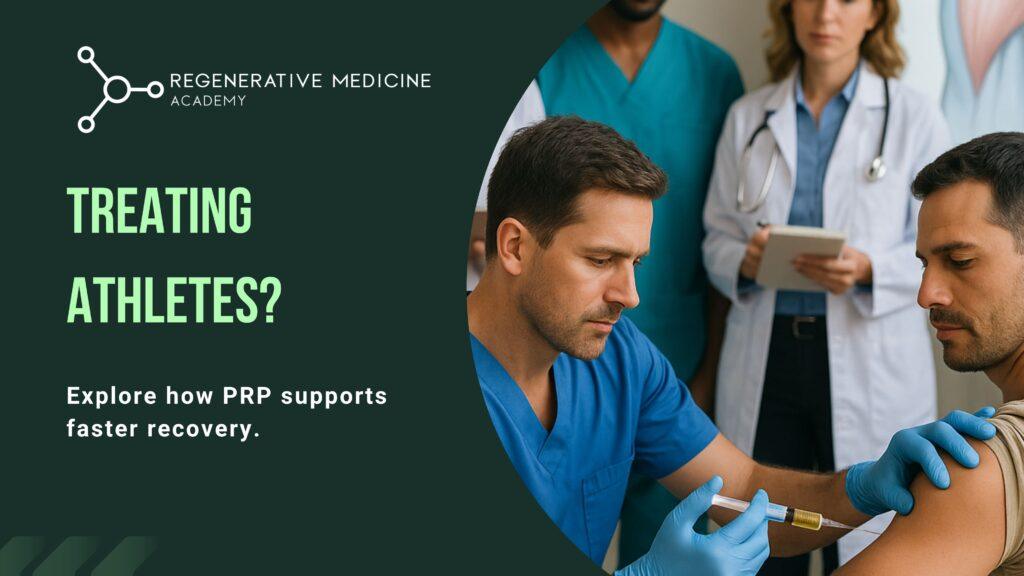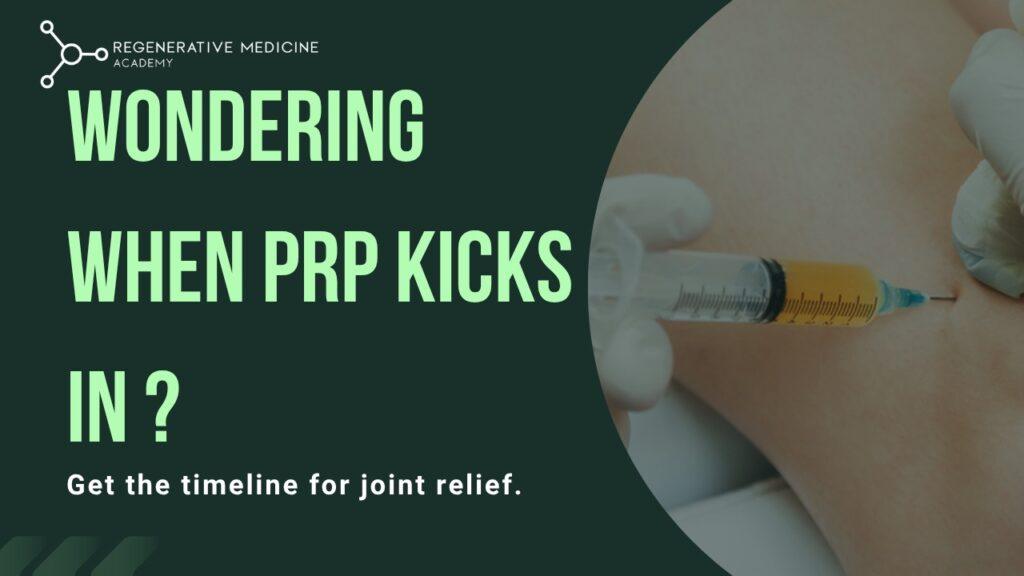What Does PRP Stand For and How Does It Work in Clinical Practice?
For many new learners in regenerative medicine, the first question is simple: what does PRP stand for? The answer is platelet-rich plasma, a concentrated component of blood that contains higher levels of platelets than normal. But understanding this term is only the beginning.
To practice confidently and competently, it’s important to go beyond definitions and explore how this therapy works biologically, why it’s used, and what kind of outcomes physicians and patients can expect.
Let’s unpack the science behind platelet-rich plasma therapy, how it’s applied in real-world settings, and what makes it a rising tool in clinical practice.
Understanding Platelets and Plasma: The Biological Foundation
Platelets are small, disc-shaped cells in the blood primarily known for their role in clotting. But they also contain growth factors and cytokines—proteins that signal cellular repair and regeneration. Plasma is the liquid component of blood that serves as a carrier for these cells, along with nutrients, hormones, and waste products.
By concentrating platelets in plasma through centrifugation, PRP therapy enhances the body’s natural healing process by delivering an enriched dose of growth factors directly to injured or degenerated tissues.
How It Works: Mechanism of Action in the Body
Once injected into the target area—whether it’s a joint, tendon, or dermal layer—platelet-rich plasma initiates a cascade of healing signals. Here’s what typically happens:
- Inflammation Phase: The body reacts to the injection with mild inflammation, signaling immune cells to begin clearing damaged tissue.
- Cell Proliferation: Growth factors from platelets promote the migration and multiplication of cells like fibroblasts, which lay down collagen and other structural proteins.
- Tissue Remodeling: Over weeks and months, the area undergoes restructuring, potentially leading to pain relief, improved function, and even partial tissue regeneration.
While results can vary, this mechanism is what makes PRP an attractive alternative to cortisone injections, which reduce inflammation but don’t promote healing.
What Is the Purpose of PRP Therapy?
The aim of PRP therapy is not just symptom management—it’s about facilitating tissue repair at the source. This makes it particularly useful in settings where traditional treatments fall short. PRP therapy is often chosen for:
- Accelerating healing in sports-related injuries such as ligament sprains, muscle strains, and tendonitis.
- Slowing degeneration in chronic conditions like osteoarthritis by supporting joint cartilage health.
- Cosmetic rejuvenation, especially in dermatology and hair restoration where cellular repair is key.
- Post-surgical healing, such as after rotator cuff repair or ACL reconstruction, where faster tissue integration can improve outcomes.
In each of these applications, PRP offers a non-surgical, low-risk option that complements both conservative and surgical treatment plans.
The Science Behind Platelet-Rich Plasma Therapy
While PRP therapy gained popularity in elite sports and aesthetics, its roots are grounded in decades of hematologic and orthopedic research. Here’s what some of the data says:
- A 2021 meta-analysis published in The American Journal of Sports Medicine found that PRP injections significantly reduced pain and improved function in patients with knee osteoarthritis, particularly when compared to placebo.
- A study published in Stem Cells International evaluated over 50 trials and confirmed that PRP plays a role in modulating inflammation and promoting soft tissue repair in musculoskeletal settings.
However, results can be inconsistent depending on the PRP preparation method, the area being treated, and the condition’s severity. That’s why ongoing research continues to refine indications and best practices.
Common Clinical Applications
1. Orthopedics and Sports Medicine
PRP is frequently used to treat:
- Tendonitis (e.g., tennis elbow, Achilles tendonitis)
- Osteoarthritis in the knees, hips, and shoulders
- Ligament sprains and meniscal injuries
2. Dermatology and Aesthetics
Known for the “vampire facial,” PRP is also used to:
- Stimulate hair growth in androgenic alopecia
- Improve skin texture and tone
- Reduce acne scars and wrinkles
3. Surgical Recovery
Some surgeons use PRP intraoperatively to promote faster healing in:
- Rotator cuff repairs
- Spinal fusions
- Oral surgeries (especially in dental implants)
As research evolves, new uses are emerging in cardiology, wound care, and even reproductive health.
Factors That Affect Treatment Outcomes
PRP isn’t a one-size-fits-all therapy. Several variables influence its effectiveness:
- Patient age and overall health: Younger patients with fewer comorbidities tend to respond better.
- Severity of the condition: Mild to moderate cases typically show more improvement than advanced degeneration.
- PRP preparation technique: Differences in platelet concentration, leukocyte content, and activation method can impact efficacy.
- Injection technique: Ultrasound-guided injections tend to produce better outcomes due to precise targeting.
Clinicians must be trained in both the science and the procedural aspects to deliver results that match the promise.
Addressing Patient Expectations
Effective communication is key. Patients often come in with high hopes based on internet trends or anecdotal success stories. Physicians should:
- Set realistic expectations about the time frame—often weeks to months—for noticeable improvement.
- Clarify that PRP isn’t a miracle cure, but part of a broader treatment plan.
- Discuss the number of sessions likely needed, especially for chronic or severe conditions.
By aligning the science with clear messaging, you create trust and long-term relationships with patients.
The Future of Regenerative Techniques in Practice
PRP’s popularity is rising, but it’s only one part of the broader regenerative toolkit. Techniques like stem cell therapy, exosome treatments, and peptide protocols are emerging as complementary or alternative options.
What sets PRP apart is its accessibility, safety profile, and relative affordability, making it a practical starting point for clinicians looking to incorporate regenerative options into their practice.
For students and early-career professionals, understanding this foundational therapy opens the door to more advanced modalities in the future.
Final Thoughts
While it’s important to answer the question, “what does PRP stand for?”, it’s even more essential to grasp how this therapy functions in real-world clinical environments. Platelet-rich plasma is more than a trending term—it’s a proven tool grounded in biology and increasingly supported by evidence.
Whether you’re a learner just stepping into regenerative medicine or a clinician exploring new treatment avenues, PRP provides a powerful, science-backed option for tissue repair and pain relief. And when used responsibly and with proper training, it can become a central part of your therapeutic offering.
Want to Learn More?
If you’re serious about incorporating PRP into your clinical skill set, explore the hands-on training and certification courses at Regenerative Medicine Academy. We provide practical instruction, biological understanding, and real-world applications—so you’re ready to deliver regenerative care with confidence.



